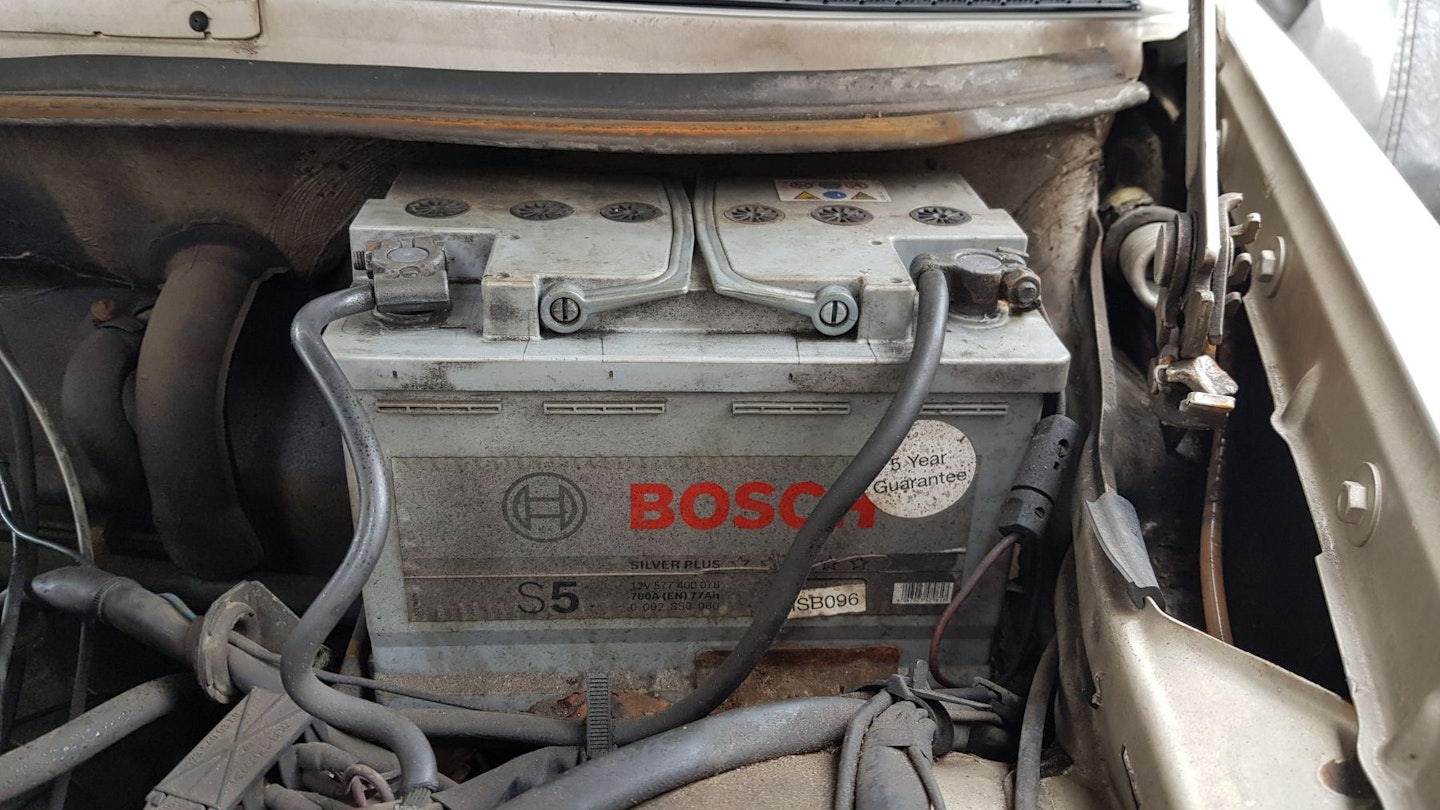They are the catalyst of everything that happens in your vehicle, so how do you disconnect a car battery correctly? What are the best ways to look after it when it's been disconnected? Most importantly, how do you prevent damage to your car and self when removing such an item?
Car batteries are fairly hefty, conventional items. They're a box-sized item that holds enough electrons to power the spark plugs, distributor, and every major electrical item within the car. You wouldn't breathe in the fresh, filtered air from the A.C system without one, so a lot can be owed to the humble items.
If you're fairly nervous about getting hands-on with your car, you're not alone. They can be intimidating machines, and most jobs start with disconnecting the battery. Even if it's connecting a battery charger. Why? Because a sudden burst of electricity could cause all manner of things, depending on the job in hand. Such as the airbag deploying without warning or damaging the on-board computer. It's always a precautionary measure, so take it.
Nevertheless, this is your step-by-step guide on to how to disconnect a car battery. We'll also include tips on what you can do once its isolated from your vehicle.
How to disconnect a car battery
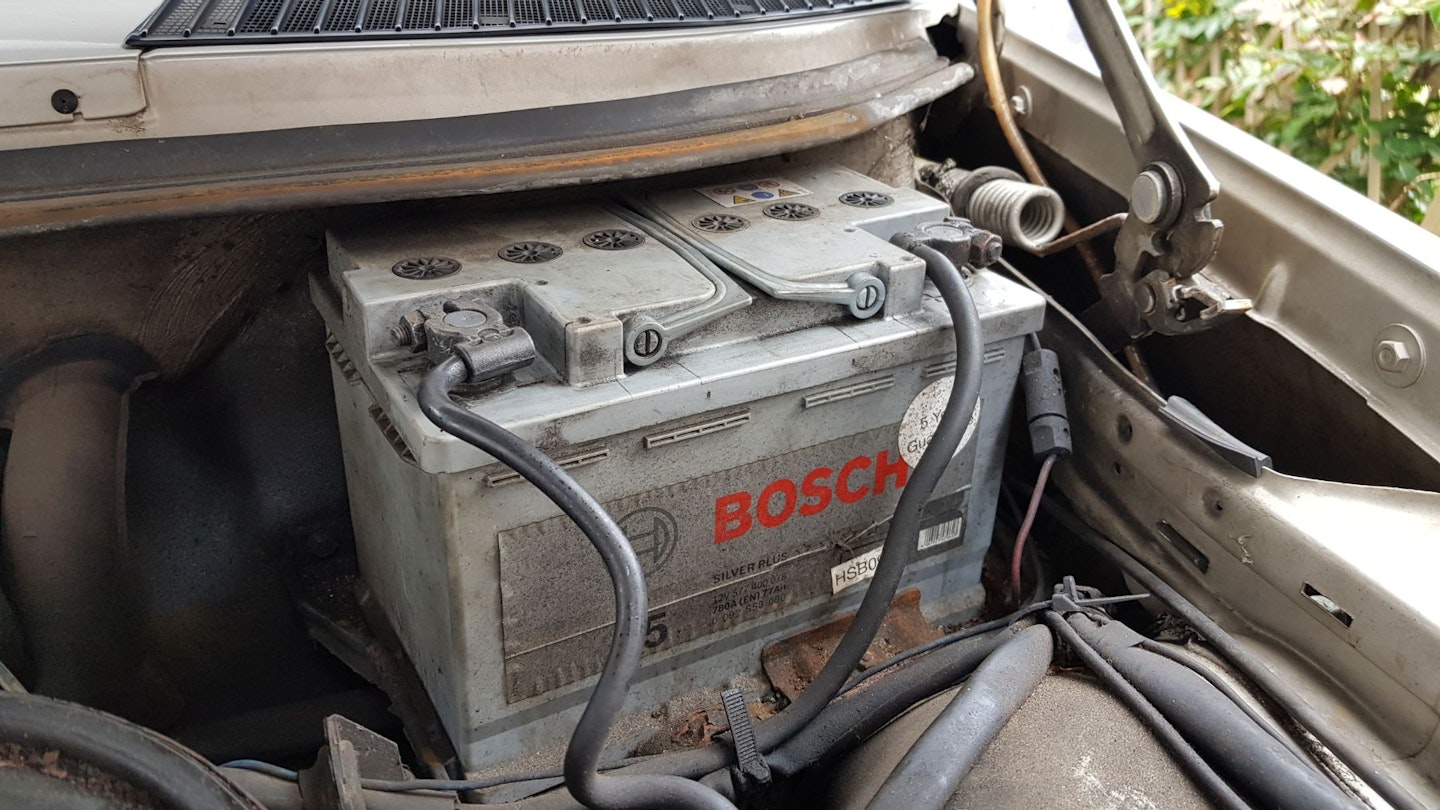
Step 1: Make sure the engine is turned off
A self-explanatory start, but if you try disconnecting the battery with the engine running, you can either be electrocuted or cause damage to the engine or the car's internals. Next, you get either your spanner or socket set to ready yourself for the disconnecting stage.
Step 2: Disconnect the negative terminal (-)
Take a spanner or socket and begin disconnecting the negative terminal of your battery. There should be labels and/or symbols denoting positive and negative terminals on the battery itself, usually outlined in a plus (+) and minus (-) form. Keep undoing until the terminal ring can be released.
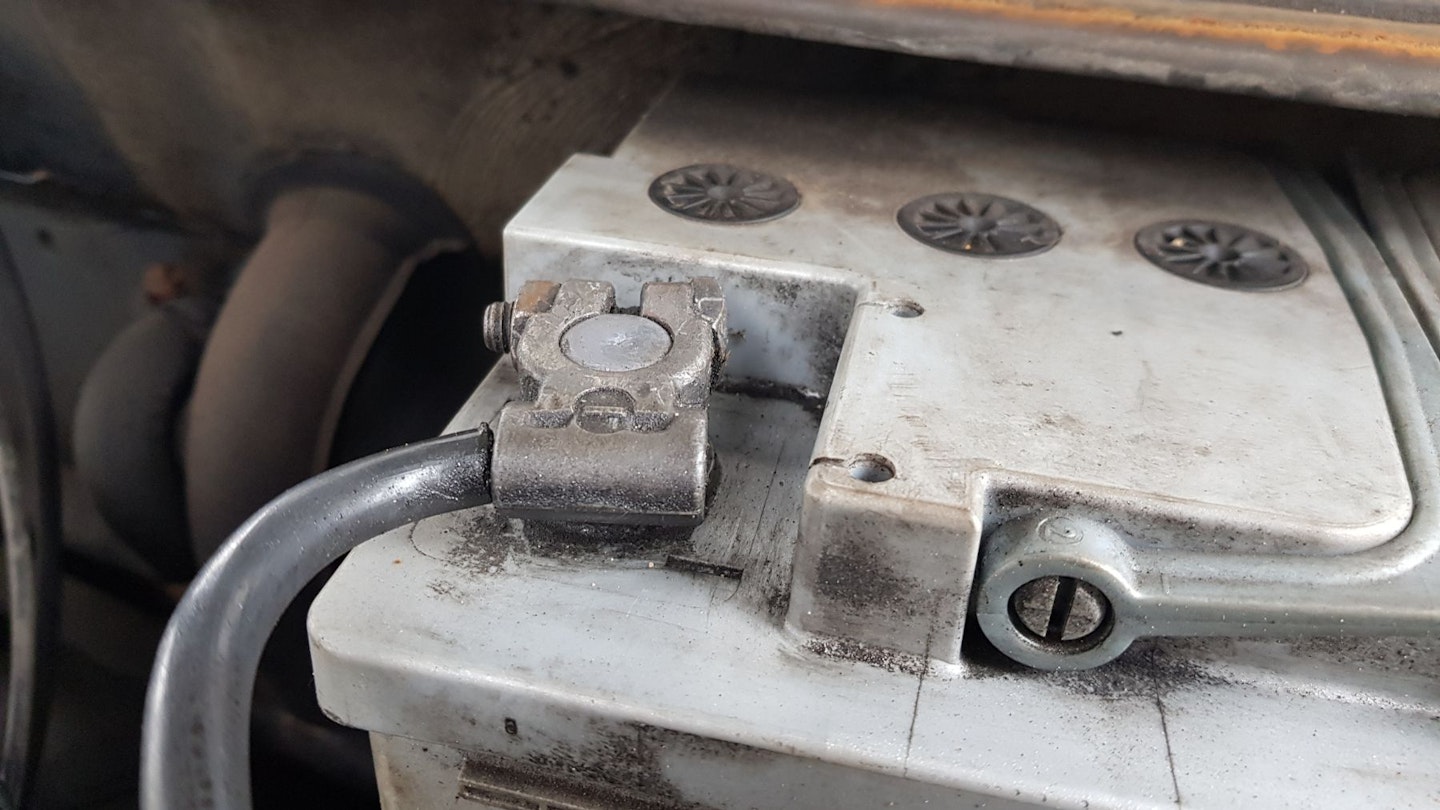
Step 3: Disconnect the positive terminal (+)
Before you begin disconnecting the positive terminal, make sure the loose negative terminal cannot come into contact with the positive. After you've secured the negative, take that spanner and do the same process to the other side until the terminal ring releases. Afterwards, make even more sure that the two terminals don't touch each other.
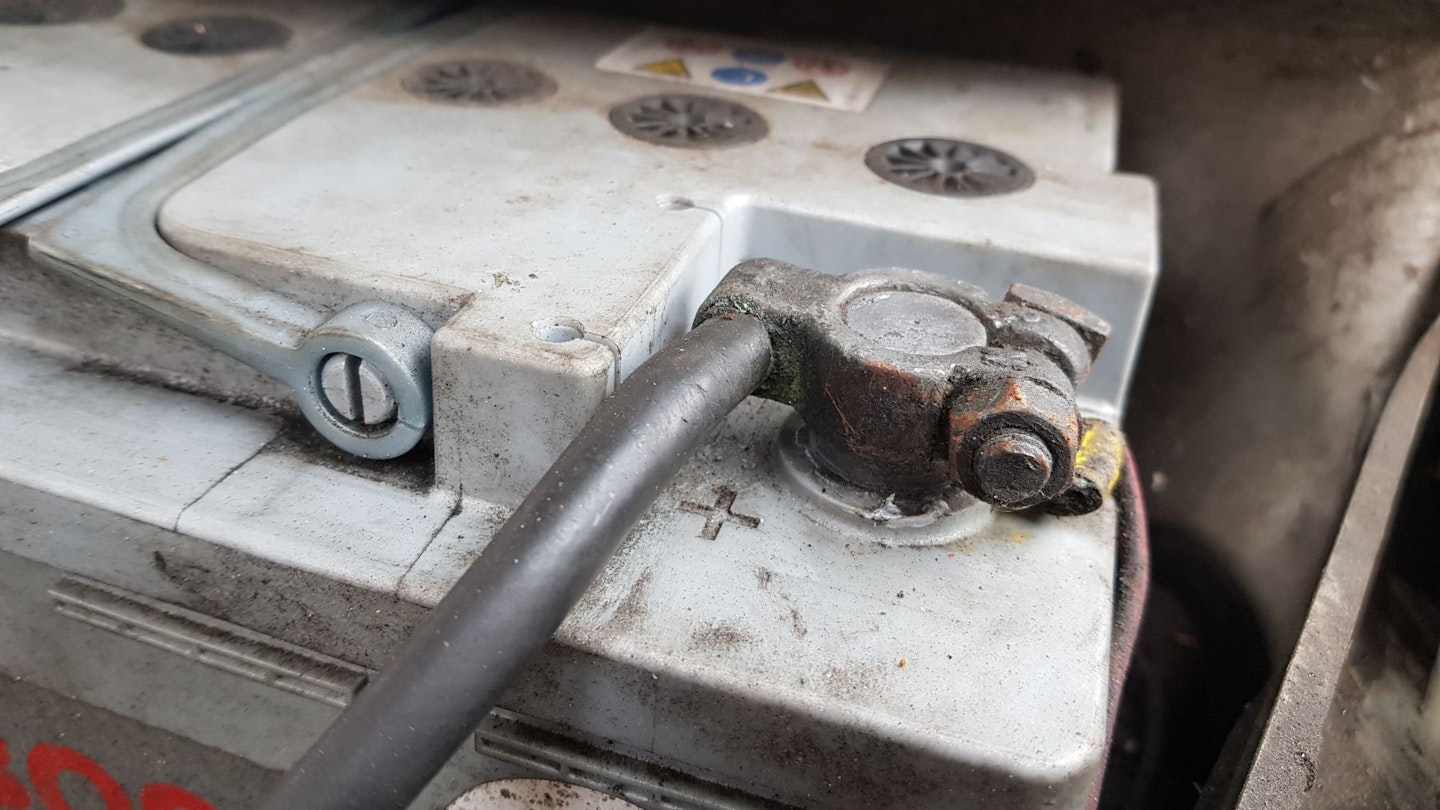
Step 4: Keep the two terminals separated and secure
You want to make sure that the terminals won't naturally bounce onto each other. You can use a pair small towels to wrap each of them, preventing them from touching any metal surface. If you're going to reconnect the battery you took out, it's worth giving it a clean. Filth on the terminals can cause electrical glitches due to a slightly poor connection.
Step 5: Reconnect the positive terminal (+)
When reconnecting a battery, work in reverse order to when you disconnected it. Start with reconnecting the positive terminal and ensure it's nice and tight. Keep your negative terminal well-separated.
Step 6: Reconnect the negative terminal (-)
Repeat the same process with the negative terminal, ensuring it's tight and clean which will ensure a good connection. Make sure you've cleared the area of any leftover tools, and you're good to go.
Additional tips when dealing with a car battery
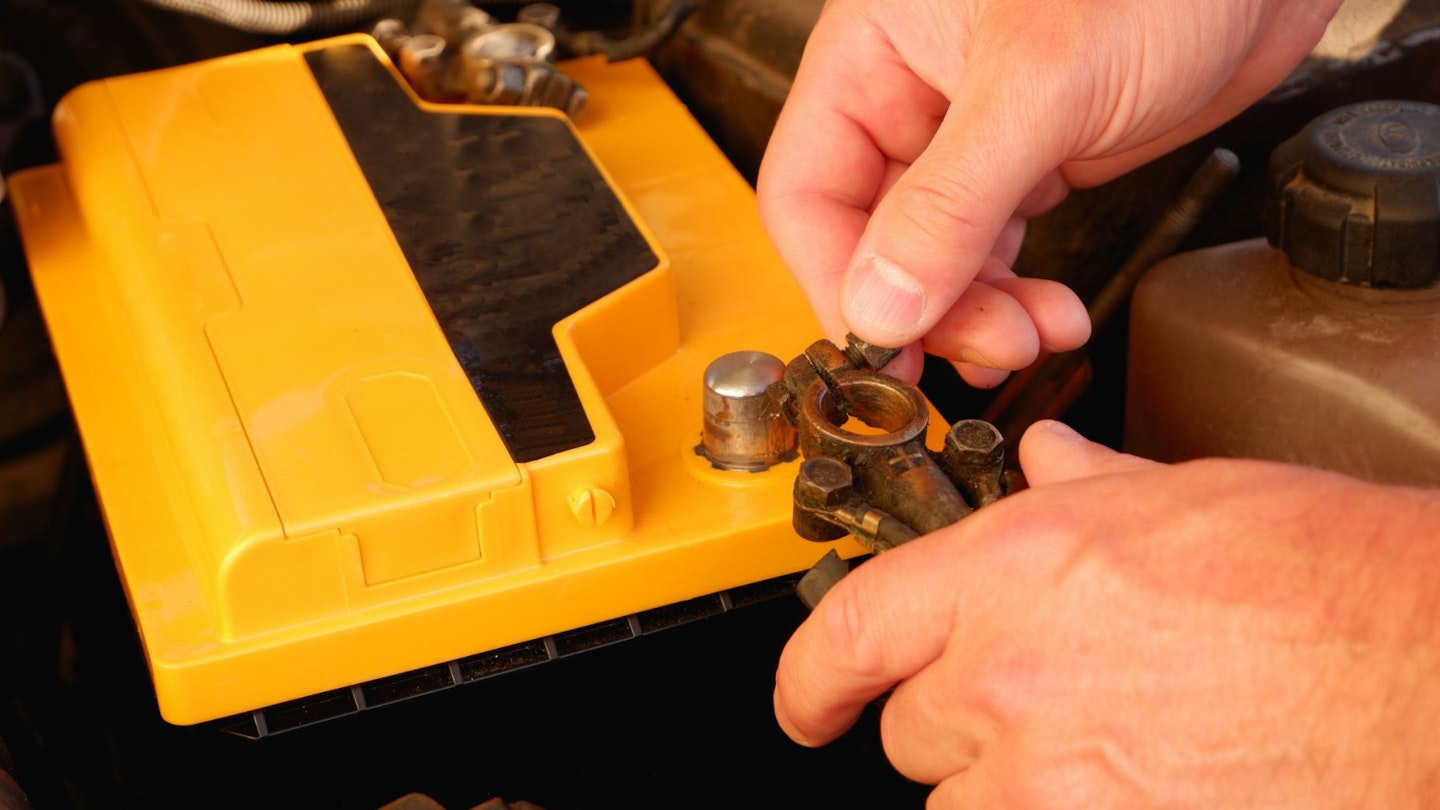
How can I prevent a car battery from going flat?
Driving is our main recommendation before anything else. If a car has been parked up for a while, starts, yet is displaying a battery warning light, it'll mean there isn't a great deal of charge in it. If it's not totally degraded, you can fix this by going on a long run which allows the alternator to give plenty of electricity back to the battery. Should you absolutely have to, you can revert to a jump starter if you find your battery completely flat.
If however, a couple of long drives doesn't work, and your voltmeter is still displaying a low charge, there are answers. A battery trickle charger is a great way to keep your car's battery conditioned while parked up.
A few smart battery chargers - notably those made by NOCO - can also double as power banks, which is a great added bonus. As well as conditioning your battery either in isolation or in your vehicle, these as well as trickle chargers are very intelligent items in reading the state of your battery and giving it as much power as it needs without overcharging or giving too little.
Lastly, if you're noticing corrosion on your battery connections, this is a sign that it could be overcharging and that the voltage regulator is faulty. A bit of agitation with some WD40 and a brush can dissolve it, but don't touch the corrosion directly with your bare hands. This then allows the bolts to unseize and free up before you can disconnect them before diagnosing the cause of the issue.
Aaron Hussain is a commercial content writer at Bauer Media writing for Parkers and CAR. He is obsessed with classic cars and anything with a fascinating story to tell.
For verdicts, scoops, news and analysis from the team, delivered direct to your inbox, subscribe to the CAR newsletter.
You can enjoy CAR in its traditional print format, or one of the swelling number of digital editions, optimised for Apple iPhones, Android devices, iPads, tablets and desktop computers.
Just so you know, whilst we may receive a commission or other compensation from the links on this website, we never allow this to influence product selections - read why you should trust us
